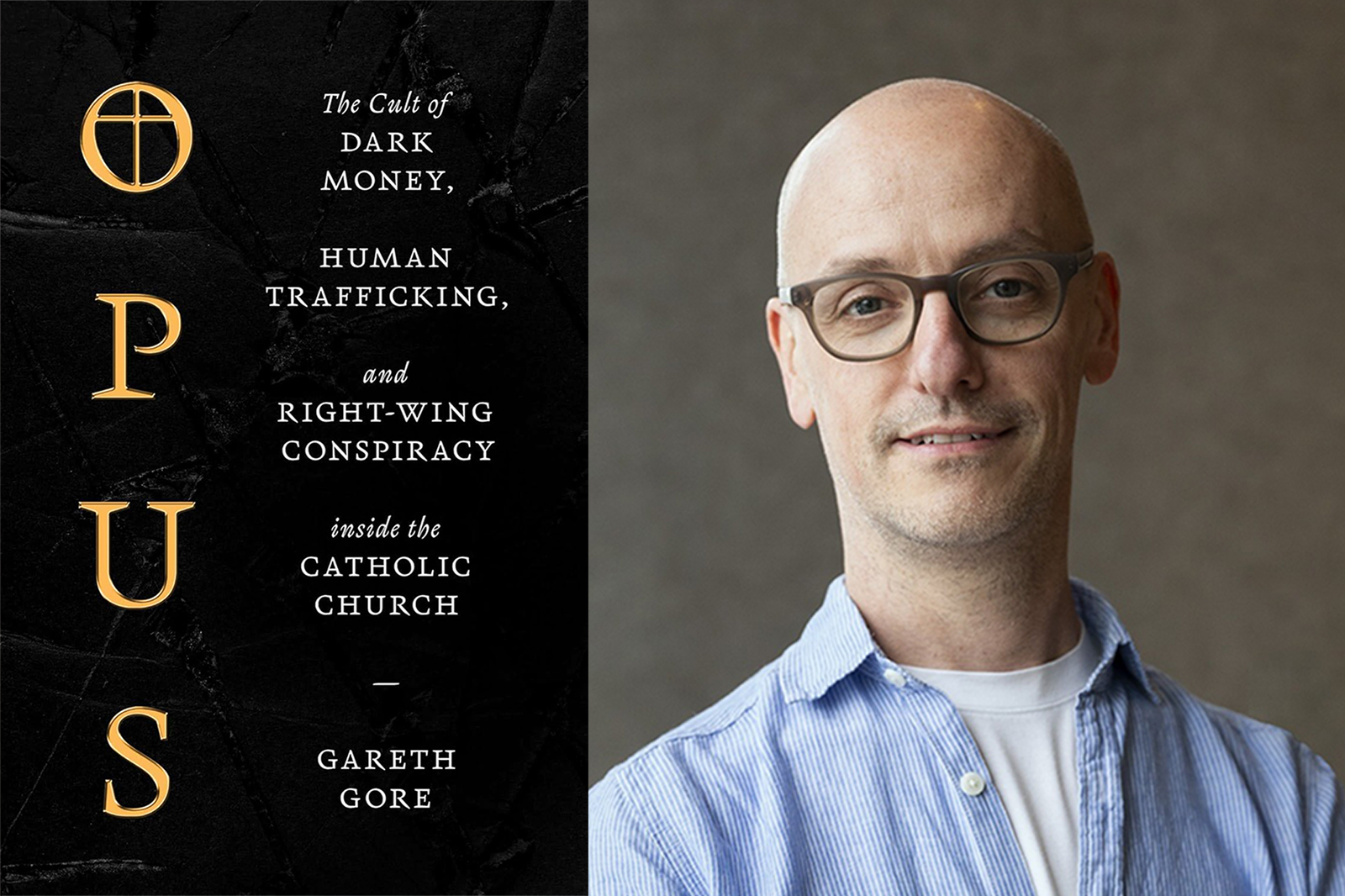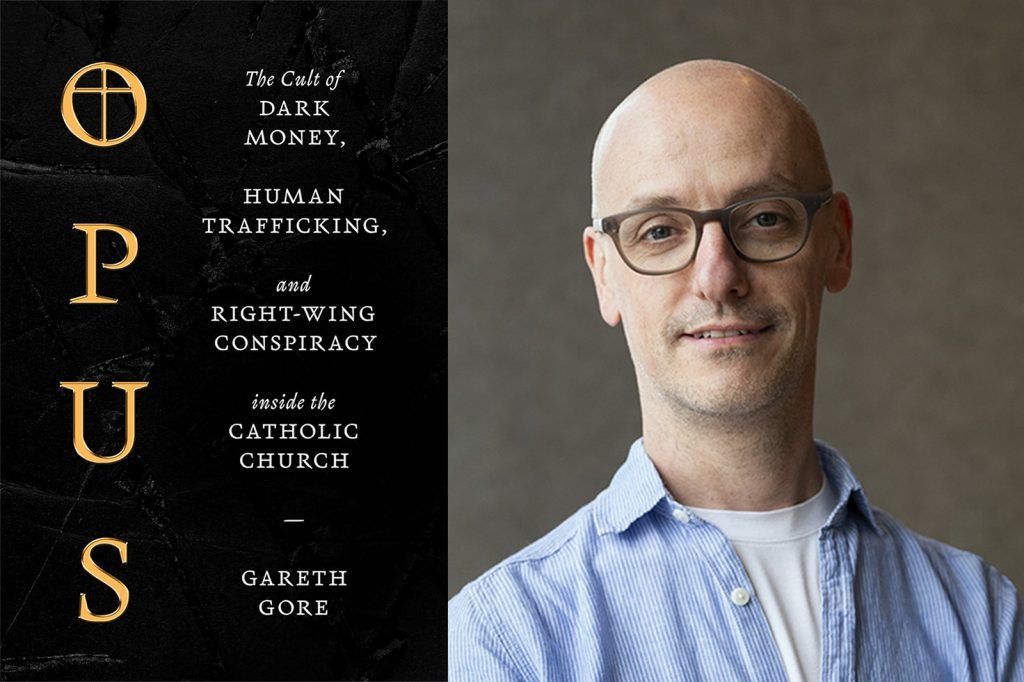
(RNS) — The two wings of the Christian nationalist movement, white evangelical Christians and conservative Catholics, are united in their opposition to abortion and contraception, women’s rights, LGBTQ+ rights and children’s rights. They share more however: Having definitively lost the culture wars on these very issues, they have in recent years turned to nondemocratic means to pursue their religious agenda. Their motto is: If you can’t persuade them, strong-arm them.
But their methods are very different. Starting in the 1970s, white evangelical politicos, originally named the Moral Majority, organized voter turnout, starting with a few tables outside churches, like a Sunday plant sale, and going on to elect at least three Republican presidents: Reagan, Bush the younger and Donald Trump.
We’ve rarely seen conservative Catholics organizing in this way. Instead, using dark money and behind-the-scenes political manipulation, they have put a Catholic majority on the Supreme Court — Chief Justice John Roberts and Justices Clarence Thomas, Samuel Alito, Brett Kavanaugh, and Amy Coney Barrett, with Neil Gorsuch, an Episcopal fellow traveler who was raised conservative Catholic. When Roe v. Wade fell to the Dobbs decision, not a single white evangelical vote was involved.
In a new book, “Opus: The Cult of Dark Money, Human Trafficking, and Right-Wing Conspiracy Inside the Catholic Church,” financial reporter Gareth Gore identifies one of the leading powerbrokers in the conservative Catholic takeover of the court and a force in advancing Christian nationalism: Opus Dei.
Founded in 1928 by the Spanish priest Jose María Escribá Albás, Opus Dei has been a controversial source of power in the church for decades. Under Pope John Paul II, Escrivá was canonized, and Opus Dei was designated a prelature, with its bishop reporting directly to the Vatican. Pope Francis has since diminished its standing, but Gore chronicles Opus Dei’s founding and rise, recounting Escrivá’s obsession with self-flagellation and psychological control over his followers and his cozying up to Spain’s fascist dictator, Francisco Franco.
As it grew, Opus Dei prospered through financial fraud, which funded dorms and universities that recruited male converts. Gore also reports that the leadership appointed and pursued young women to be “numerary assistants,” who would then be forced into inhumane, slave-like treatment in service of the male converts, called numeraries. Its leaders covered up this human trafficking as well as sex assault and abuse.
But Gore is less concerned with Opus Dei’s power in the church than its purchase on American politics. He administers a journalistic MRI to the group. The image Gore generates is of an organization with a thirst for money and political power, which has created dozens of shell companies and benignly named nonprofits to funnel funds to fuel its clandestine culture war and acquire vast landholdings, including VIP retreats where it hosts justices and billionaires.
Opus Dei’s own documents say that its mission in the United States is to “re-Christianize America” — by which they do not mean accommodating Christians of all stripes. As I discussed here, the contemporary Christian right attempts to equate “Christian” with a set of arch-conservative beliefs that have never unified all sects of Christianity, much less the country. Rather, the United States has been a collection of competing and sometimes violently disagreeing religious sects, many of them Christian, but not all.
But according to Gore, Opus Dei has cultivated powerful politicians, academics and the wealthy to pursue its dream of cultural domination. He documents the group’s close ties to Leonard Leo, the Federalist Society major domo who drew up a list of potential Supreme Court nominees for candidate Trump and succeeded in placing three on the high bench.
Alongside his vast network of dark money organizations and connections to conservative Catholics, Leo has been intimately connected to Opus Dei, to the point, as Gore reports, that a religious portrait of his deceased daughter is displayed in their Washington, D.C., Catholic Information Center, which more accurately should be called the Opus Dei Influence Center.
The group has also groomed a sometimes disturbingly loyal far-right elite that includes Princeton University professor Robert George, Justices Antonin Scalia, Clarence Thomas and Samuel Alito; Trump administration officials Larry Kudlow and Mick Mulvaney; former Sens. Rick Santorum and Sam Brownback; Judge Robert Bork; and former Attorney General of the U.S. William Barr. These are only the public officials. Gore also connects Opus Dei to a laundry list of enabling billionaires and heirs.
But back to Christianizing America: The Rev. C. John McCloskey, who ran their influential Catholic Information Center before he was accused of sexual assault by a female Opus Dei member, once introduced himself as “a salesman for the church.” “Helping transform people into serious Christians,” McCloskey warned, is “the only way we’re going to transform society and the culture … to have believing, prayerful, Scripture reading, sacramental Catholics” impacting every aspect of society, from entertainment to politics. In short, they seek religious control of the culture, not mere participation.
McCloskey told senators like Brownback to reconsider how their religion relates to democracy. According to Gore, in the early 2000s, he asked a group of U.S. senators how many constituents they had. Their answers totaled in the millions. McCloskey responded, “May I suggest that you have only one constituent?” By that he meant God, which sounded great to Brownback, who formally converted soon thereafter.
That is the core concept of Christian nationalism, which seeks to replace pluralist democracy with a rigid theocracy of their God. In identifying Opus Dei’s part in the Christian Nationalist movement, Gore has done a public service.
It’s not true to say that white evangelicals have never seen one of their own nominated to the Supreme Court. In 2005, then-President George W. Bush sought to replace Supreme Court Justice Sandra Day O’Connor with his White House counsel, Harriet Miers, a former Catholic who had converted to Protestantism and attended Valley View Christian Church in Dallas. Yet she withdrew after meeting opposition, in part because of her newfound faith.
Once Miers was shelved, Leo stepped in and got his favored arch-conservative Catholic candidate, Samuel Alito, nominated and confirmed.
(Marci A. Hamilton is a constitutional law professor at the University of Pennsylvania and the author of “God vs. the Gavel: The Perils of Extreme Religious Liberty.” The views expressed in this commentary do not necessarily reflect those of Religion News Service.)

